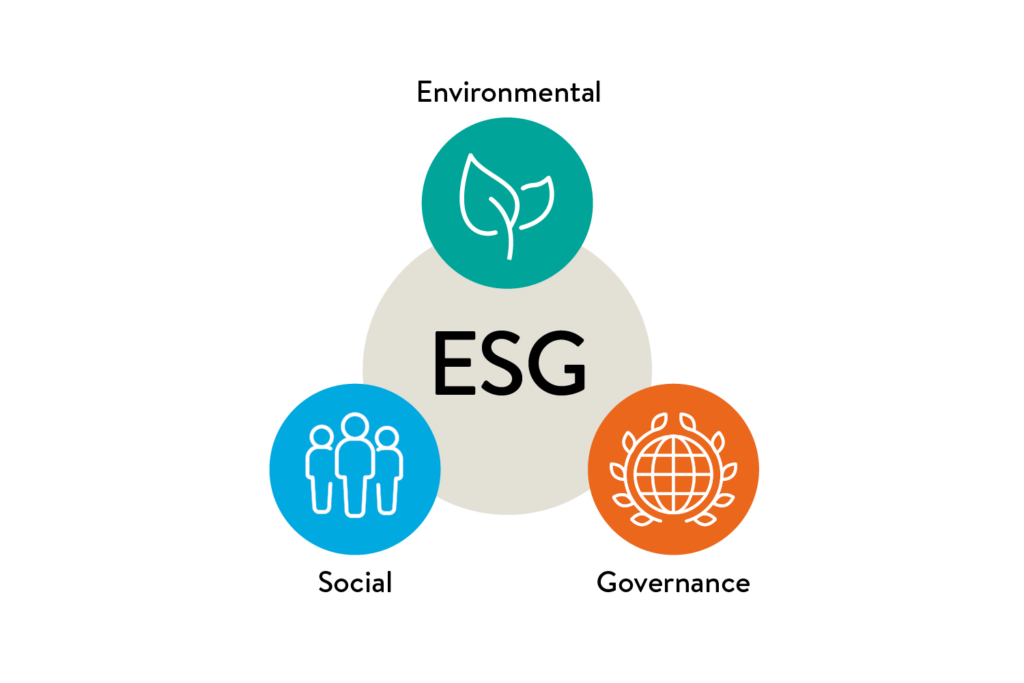What does ESG stand for?
Well if you’re not sure, you’re not alone, but just so we know we’re all on the same page, ESG means “Environmental, Social and Governance” and is a way many companies report their actions and the impact these have on society. In some cases, it has come to replace “CSR” (Corporate Social Responsibility) to define how a company tries to be a good corporate citizen.
The term has come to prominence primarily as a method used by many investors to assess companies and apply ethical standards to their investments. However, as more organisations began to embrace the concepts it has come to signify something much wider.
Conscious Capitalism
The benefits of engaging with ESG goals are clear, not least from addressing the challenges of climate change and inequality in society. As we reported previously, the UN sustainable development goals are “in peril”, and it has never been more important for organisations to step up and do their part. A strong ESG strategy is shown to build value for companies. Impact including productivity increases due to employee satisfaction and cost reductions in energy consumption provide compelling economic arguments.
There is a wider Conscious Capitalism movement which seeks to balance making profits with making a positive impact. However, it should also be noted that ESG has come under attack from some quarters, for instance, legislation proposed in Texas would bar the State’s pension funds from investing in companies seen to boycott energy companies. Set against this febrile environment it can often feel daunting to address ESG, but demonstrating clear purpose can also be a major factor in attracting the next generation of talented colleagues.
What do you stand for?
In our most recent Diversity and Inclusion report 81.5% of the 3,000 students who responded to our survey said that when applying for a job it was very important the employer understood, accepted and valued differences between people. There is little doubt that the next generation of our colleagues and customers are watching carefully, and they have a real nose for authenticity.
This taps into one of the key problems with many ESG strategies. When speaking to investors, a lengthy report with well resourced metrics across each area is ideal, yet this does little to communicate to a wider audience, especially one that is bombarded with thousands of messages as part of their daily lives.
Show don’t tell
Often the work done to embed ESG strategies can be lost, unless it is very clear that your organisation really does live its values. Young people are acutely aware of how they are represented, and how companies communicate with them.
Ninety per cent of the students we surveyed told us that hearing from role models from a similar background would make them more likely to apply for a job.
Clearly showing that an organisation is addressing inequality and that a person’s background is no barrier to advancement is vital, but this might not always be easy to achieve, especially if you are at the beginning of an ESG journey.
One way to start is to open opportunities to a wide range of young people from diverse backgrounds. The Chartered Insurance Institute is a wonderful example with its ambition to reach thousands of students through their partnership with Springpod.
Practise what you preach
Our virtual work and learning experiences remove physical barriers, simply by allowing young people who can’t travel to your offices to take part.
Importantly they are also available to a broad section of society, one recent cohort of students for the British Library was 81% female, with 47% from Minority ethnic backgrounds, of whom 29% were in receipt of free school meals. With comprehensive reporting and tracking you can measure your social impact, and perhaps more importantly, demonstrate the effect your programmes have.
Those who have a long-term commitment to providing equality of opportunity find that they are better able to attract talent in the future, rather than being limited to a restricted pool, the entire student cohort is available.
One example would be STEM employers who have worked to tackle existing gender bias, now finding they have applications from both talented young men and women for any role against industry wide figures where only one in four positions are held by women.
More negatively, those who do not give ESG due consideration will fall behind any rivals who are seen to showcase greater corporate responsibility.
Leverage your impact
A final key point often forgotten when discussing ESG is the effect embracing commitments has on existing employees.
Leaders find they have the chance to engage and motivate their own team by facilitating volunteering opportunities on our mentoring platform.
This can often be the most enduring benefit of a strong ESG programme, and a compelling reason to begin today.
Many companies struggle or don't know where to start with the Social element of ESG, Springpod is supporting and working with organisations to complement their existing education and social value activities.
If you're interested in finding out more about how we can help, get in touch: partners@springpod.com




